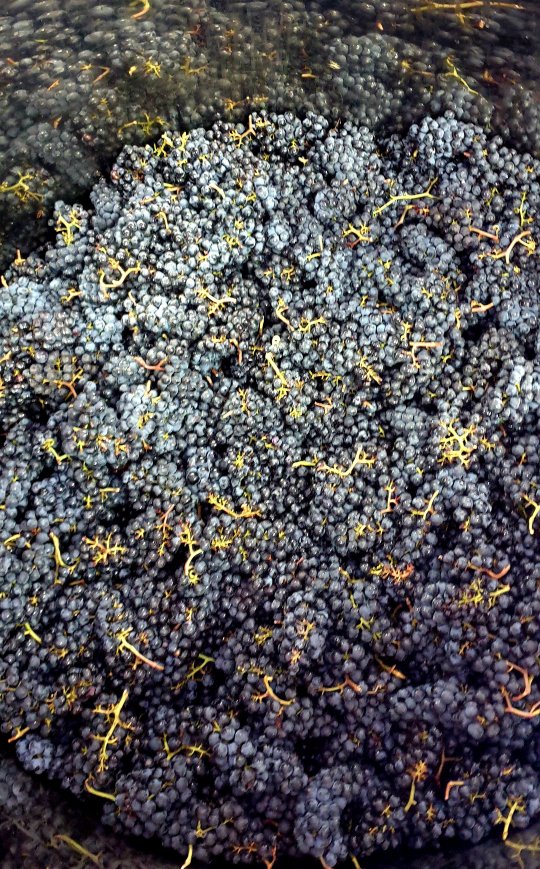The other chapters presented possible procedures and the best time to practice them. The section focuses on what principles can be applied when choosing the procedures for a given vat.
4.1.5.f What guiding principles can be applied to extraction?
What is the desired final wine profile?
The desired profile is a determining factor during the different stages of the winemaking process. It determines whether the winemaker will choose to make a wine for laying down or a wine for more immediate consumption, for example. In the same way, with regard to the aromatic profile, a judicious choice of harvest date and fermentation temperature will enable the wine to be oriented in the desired direction.
What extraction possibilities are available in the winery?
Pumping over is probably the most universal technique since it requires little equipment.
Punching down depends more on vat size but for small sizes is very easy to implement. For larger vats, specific equipment is recommended.
Rack and return requires space in the winery, which is not always available.
Infusion requires a specific system, which should ideally be considered beforehand, when designing the winery.
Having determined the theoretical possibilities regarding extraction, it is then necessary to study the available raw material. A great wine can only be produced from great grapes.
What are the characteristics of the raw material?
The harvest must be carefully examined to determine the most appropriate techniques. This requires establishing a tannic, aromatic and technological profile through analysis of the maturity tests, berry tasting, the health of the grapes, their origin, variety etc.
What are the characteristics of the skins and seeds?
It is also necessary to take into account what happened during the vintage. For example, in a hot year with a lot of sunshine, the skins can be very thick.
The profile of the skins is very important and will have a major influence on the extraction kinetics.
Skins that are difficult to break up and/or thick when tasted will require more complicated extraction procedures. It is therefore important to have this information when the harvest arrives so as to be able to choose appropriate techniques. Fortunately, there are various methods to deal with this issue.
First and foremost, the temperature, which makes it easier to extract compounds by weakening the skin structure. For example, heating to 28°C once the density has started to decrease and until it has decreased by 25 points is sufficient to correctly extract anthocyanins and skin tannins. Fractional pumping over is very important for such instances.
Several trials have confirmed that fractional pumping over is significant for skins that are more difficult to extract because the regularly renewed juice enables an optimal concentration gradient, thereby enhancing extraction. Fractional pumping over is less significant if the skins have reached optimal ripeness as extraction will already be much easier.
In more complicated vintages (difficult maturity, presence of botrytis, etc.) one must be vigilant and not seek over-extraction. The seed maturity is a factor that must be carefully considered. Under-ripeness coupled with strong extraction can lead to the appearance of harsh, bitter, and vegetal compounds.
Special case of whole bunch vinification
Whole bunch vinification consists of vinifying a vat with all or some of the stems. This practice is very popular in Burgundy.
Stems can give the wine more aromatic freshness, lower the acidity and improve the tannic structure. They also have a sponge effect on the anthocyanins, partly absorbing them, and some of the alcohol. For a vat with 90% whole grapes, a difference of 0.5% vol was observed for Pinot Noir.
When vinifying whole bunches, punching down allows the juice to be extracted from the numerous intact berries. It is therefore a good means of extraction. Pumping over is more effective later when there is more juice.
When using this technique, there are some precautions:
- Clean the bunches correctly by passing them through the sorting line without using the destemmer
- Make sure that the stems are well matured, otherwise they may introduce overly vegetal notes. When the stalks begin to lignify, their maturity is more advanced.
- Be extra vigilant regarding any microbiological deviations when adding the grapes to the vat, especially when adding mainly whole bunches. Since there is little juice, the start of AF can be long.
- The press wines resulting from such vats are often still very rich in sugar, so the end of fermentation should be observed particularly closely.


